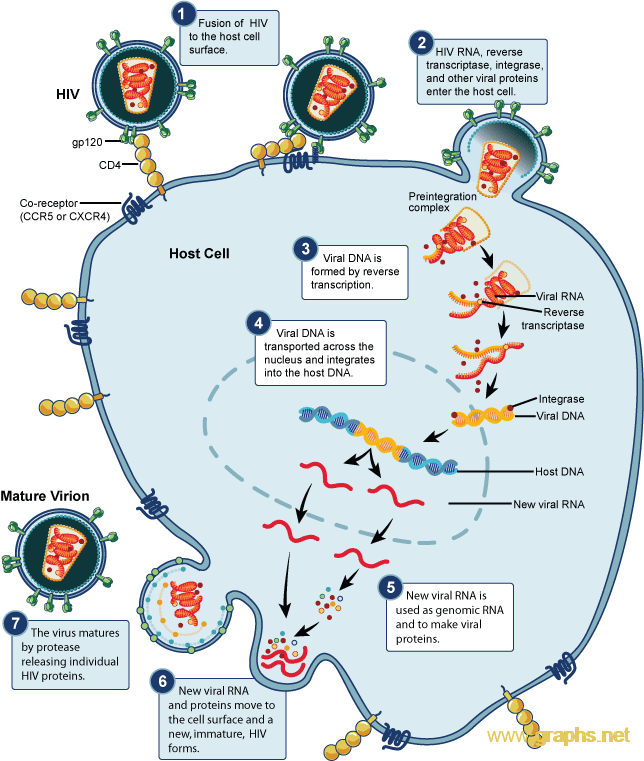
The HIV enters the body through sexual contact, sharing of needles, infected blood transfusion and from a infected mother to her baby. After it enters, the HIV to survive in the body fuses with the host cell which usually is a T-cell or CD4 cell. The attaching occurs when the surface protein of HIV locks into the surface protein of host cell.
Once inside the cell, the RNA of HIV uses reverse transcriptase to become double-stranded DNA. It then uses the host cell to reproduce by integrating the new DNA into its nucleus. It then waits for the materials for reproduction to complete.
After all the materials are assembled, it then separates and assembles as a new HIV with the help of enzyme prototease. With its new outer layer of hosts cell membrane, it enters into blood circulation. And this whole process is HIV Replication